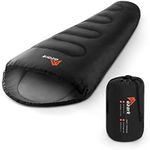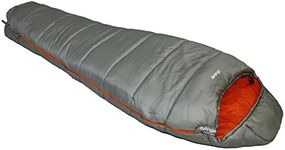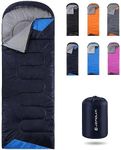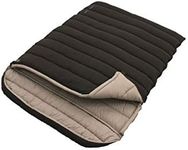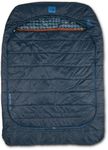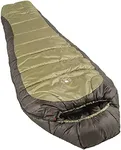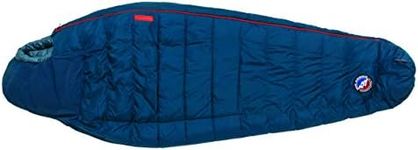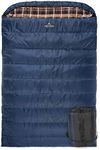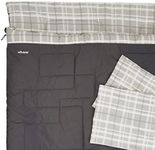Buying Guide for the Best Camping Sleeping Bags
Choosing the right camping sleeping bag is crucial for a comfortable and enjoyable outdoor experience. The right sleeping bag will keep you warm, dry, and comfortable throughout the night. When selecting a sleeping bag, consider factors such as the weather conditions, the type of camping you'll be doing, and your personal preferences for comfort and space. Here are some key specifications to consider when picking the best sleeping bag for your needs.Temperature RatingThe temperature rating indicates the lowest temperature at which the sleeping bag will keep you warm. This spec is important because it helps you choose a sleeping bag that matches the expected weather conditions. Temperature ratings are usually divided into three segments: summer (above 32°F/0°C), three-season (20°F to 32°F/-6°C to 0°C), and winter (below 20°F/-6°C). To pick the right one, consider the coldest temperature you expect to encounter during your camping trips. If you tend to camp in colder conditions, opt for a lower temperature rating.
Insulation TypeInsulation type refers to the material used to keep you warm inside the sleeping bag. The two main types are down and synthetic. Down insulation is lightweight, compressible, and offers excellent warmth, but it can lose its insulating properties when wet. Synthetic insulation is bulkier but retains warmth even when damp and is generally more affordable. Choose down if you prioritize weight and packability, and synthetic if you expect wet conditions or want a more budget-friendly option.
ShapeSleeping bags come in different shapes, including mummy, rectangular, and semi-rectangular. Mummy bags are snug and tapered, providing maximum warmth and reducing weight, making them ideal for cold weather camping. Rectangular bags offer more space and comfort, suitable for warmer conditions or those who prefer more room to move. Semi-rectangular bags strike a balance between warmth and space. Choose a shape based on your comfort preference and the type of camping you plan to do.
WeightWeight is an important consideration, especially if you plan to carry your sleeping bag on long hikes or backpacking trips. Lighter sleeping bags are easier to carry but may offer less insulation. Heavier bags provide more warmth but can be cumbersome. To pick the right weight, consider the balance between warmth and portability. If you're backpacking, prioritize lighter options; for car camping, weight may be less of a concern.
Size and FitSize and fit refer to the dimensions of the sleeping bag and how well it accommodates your body. Sleeping bags come in various lengths and widths to fit different body types. A well-fitting sleeping bag will trap heat more effectively and provide better comfort. Check the size specifications and choose a bag that matches your height and girth. If you prefer more space, opt for a wider or longer bag.
MaterialThe material of the sleeping bag affects its durability, comfort, and moisture resistance. Common materials include nylon, polyester, and ripstop fabrics. Nylon and polyester are lightweight and quick-drying, while ripstop fabrics offer enhanced durability. Choose a material based on your camping conditions and personal preferences. If you expect rough use or wet conditions, opt for durable and moisture-resistant materials.
PackabilityPackability refers to how easily the sleeping bag can be compressed and stored in your backpack. This spec is important for backpackers and hikers who need to save space and reduce weight. Sleeping bags with high packability can be compressed into small sizes, making them easier to carry. To pick the right packability, consider the size of your backpack and how much space you need for other gear. If space is limited, prioritize highly packable sleeping bags.
